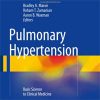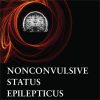Hemodynamic Management Challenges of Septic Shock
healthmanagement.orgSepsis is one of the main causes of admission to the Intensive Care Unit (ICU). It is defined as a life-threatening organ dysfunction, caused by dysregulated host response to infection (Singer et al. 2016).
Septic shock is a public health problem, impacting millions of people worldwide every year, killing between one in three and one in six sufferers (Evans et al. 2021).
It is one of the world’s leading causes of death. Overall mortality in patients hospitalised with sepsis can be up to 24.2% and is higher in patients with comorbidities (33.1 vs 19.1%) (Kaukoken et al. 2014). Septic shock has a mortality rate of ~40% (Singer et al. 2016).
Treatment of sepsis and septic shock consists of treating the infection with antibiotics and controlling the source of infection while providing adequate multi-organ support.
The hemodynamic alterations that accompany septic shock involve a severe decrease in systemic vascular resistance (SVR), an initial increase in cardiac output (CO) due to decreased left ventricular (LV) afterload and increased cellular metabolic needs, in addition to relative hypovolemia due to leakage of fluid through vessels or absolute hypovolemia when the patient has had significant fluid loss or intolerance to oral fluids

















